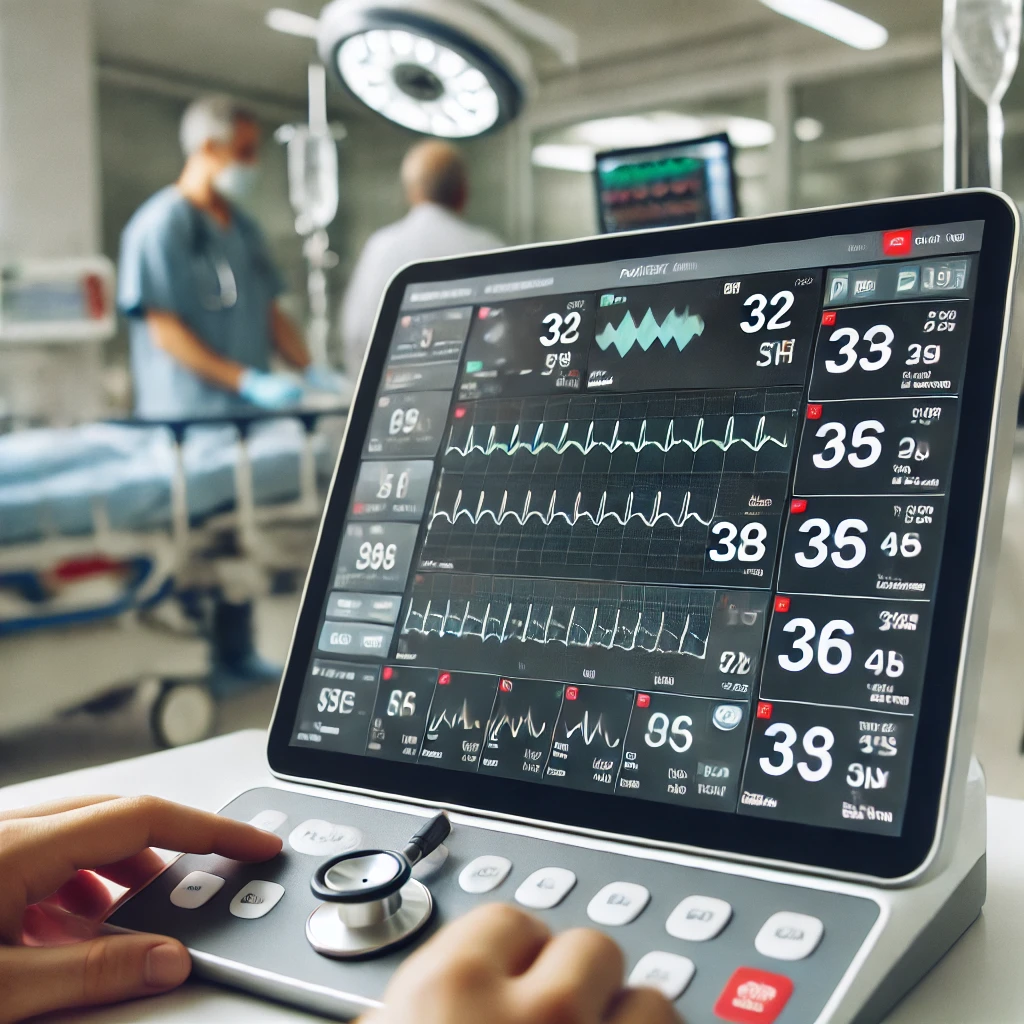Introduction Patient monitoring systems are critical tools in healthcare facilities, allowing medical professionals to track vital signs, assess health conditions, and provide timely interventions. Choosing the right patient monitoring system for your clinic is essential for improving patient outcomes and operational efficiency. In this article, we will explore the key factors to consider when selecting a patient monitoring system.
1. Understanding the Importance of Patient Monitoring Systems Patient monitoring systems help clinicians track essential physiological parameters such as:
- Heart rate and rhythm
- Blood pressure
- Oxygen saturation (SpO2)
- Respiratory rate
- Temperature These systems are crucial in intensive care units (ICUs), emergency rooms, and outpatient clinics, where real-time data is necessary for timely medical decisions.
2. Types of Patient Monitoring Systems Different medical facilities require various monitoring solutions depending on patient needs and clinical settings.
- Bedside Monitors: Used in hospitals and ICUs to continuously track patient vitals.
- Wearable Monitors: Provide real-time tracking for ambulatory patients.
- Remote Patient Monitoring (RPM) Systems: Allow healthcare providers to track patients outside hospital settings, reducing readmission rates.
- Wireless Monitoring Systems: Improve mobility and reduce clutter in healthcare environments.
3. Key Features to Look for in a Patient Monitoring System When selecting a system, consider these essential features:
- Accuracy and Reliability: High precision in readings is critical for medical decisions.
- Ease of Use: The system should have an intuitive interface for healthcare staff.
- Connectivity and Integration: Seamless integration with hospital information systems (HIS) and electronic medical records (EMR) enhances efficiency.
- Battery Life and Portability: Especially important for transport and emergency monitoring.
- Data Storage and Analysis: Advanced systems provide data history and trend analysis to support clinical decision-making.
4. Comparing Leading Patient Monitoring Systems Several top brands offer advanced patient monitoring solutions. Some of the most trusted systems include:
- Philips IntelliVue Series: Known for high-resolution displays and seamless data integration.
- GE Healthcare CARESCAPE Monitors: Offer advanced clinical intelligence tools.
- Dräger Infinity Acute Care System: Ensures comprehensive monitoring in critical care settings.
- Mindray BeneVision Monitors: Feature wireless connectivity and cloud-based data storage.
- Medtronic Nellcor Pulse Oximeters: Provide accurate SpO2 readings for respiratory monitoring.
5. Budget Considerations and Cost-Effectiveness While high-end monitoring systems provide advanced features, budget constraints may require clinics to find cost-effective solutions.
- Consider refurbished or certified pre-owned systems from reputable suppliers.
- Evaluate leasing or financing options to manage upfront costs.
- Assess total cost of ownership, including maintenance, software updates, and staff training.
6. Compliance and Certification Ensure that the selected monitoring system meets industry standards and regulations:
- FDA (U.S. Food and Drug Administration) approval
- CE marking (European conformity)
- ISO 13485 certification for medical device quality management
7. Future Trends in Patient Monitoring Systems As technology advances, patient monitoring systems continue to evolve. Emerging trends include:
- Artificial Intelligence (AI) and Predictive Analytics: AI-powered systems can detect early signs of deterioration.
- Telemedicine and Remote Monitoring: Increased use of RPM systems for home-based care.
- Internet of Medical Things (IoMT): Connectivity between medical devices for real-time data sharing.
Conclusion Selecting the best patient monitoring system requires a careful evaluation of clinical needs, system features, budget considerations, and compliance with industry standards. By choosing the right system, clinics can enhance patient care, improve workflow efficiency, and ensure better health outcomes.


